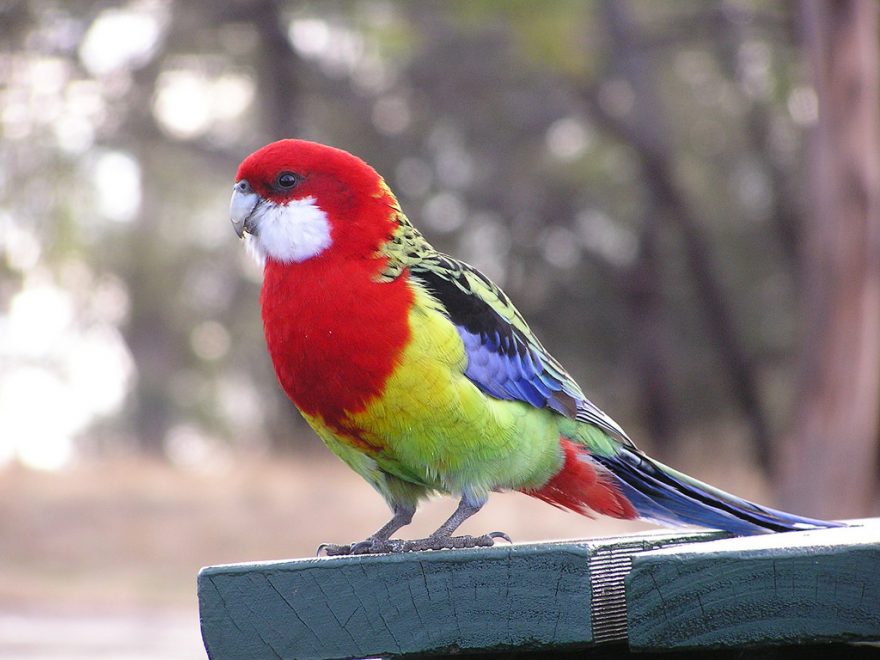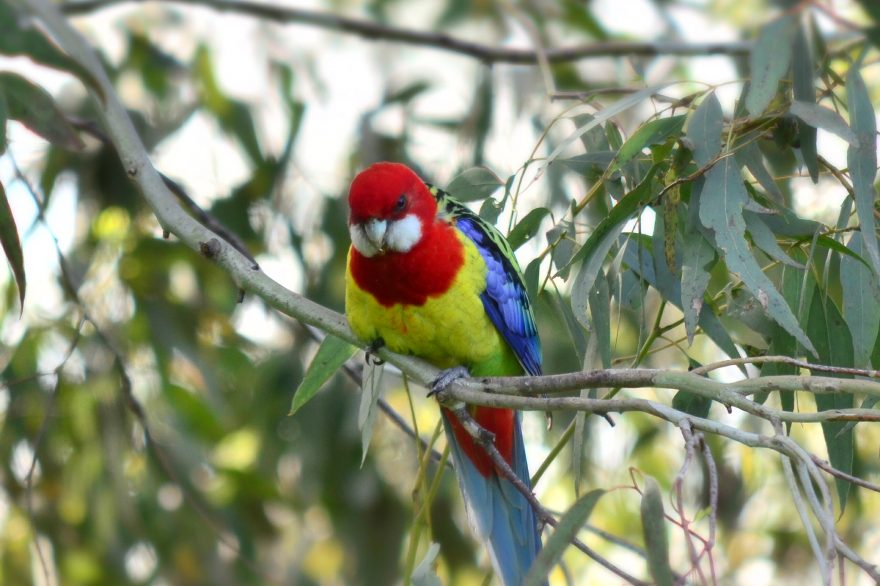The eastern rosella is a colorful medium-sized parrot native to south-eastern Australia — including Tasmania. They are the most commonly kept of the six species in the rosella genus. They are readily available throughout the world, but are far less frequently kept outside of Australia.

Housing & Compatibility
Eastern rosellas can be aggressive and should only be housed in single-pair aviaries. They require a good amount of flying space to get the exercise they require, so the aviary should be at least 3-5 metres (10-16 feet) in length.
Eastern rosellas will hybridize with other types of rosellas and other species of Australian parrots, including bluebonnets, hooded parrots, mulga parrots, mallee ringnecks, and red-rumped parrots. To prevent captive bloodlines from becoming polluted, eastern rosella should only ever be housed with other eastern rosellas.
Rosellas enjoy chewing on wood, so the aviary needs to be constructed out of metal. They tend to create quite a bit of mess, so a concrete aviary floor that can easily be cleaned in preferred. The aviary should be fully roofed to keep water off of the floor. If housed in a bank of aviaries, double wiring between sections is required to prevent fighting and injury.
Non-toxic leafy branches, particularly from eucalyptus trees, should be placed in the aviary to give the rosellas something to chew. This provides them with entertainment and exercises their beak and feet. They will eat seeds and flowers.
Diet & Feeding
A quality small parrot seed mix forms the basis of the rosella’s diet. Seed should be stored in an airtight plastic container to prevent exposure to vermin and moisture. Seed can be soaked or sprouted to improve its nutritional value.
A good diet includes a mix of fruits and vegetables, such as apple, pear and corn. Leafy green vegetables are essential; silverbeet (chard), bok choy, kale and endive are particularly enjoyed.
Many breeders prefer to feed pellets instead of seed. Pellets provide a more balanced intake of vitamins and minerals and produce less waste. Commercial supplements such as egg & biscuit mix can be added to the diet to provide additional protein during the breeding season.

Breeding
Eastern rosellas will breed from early spring through til summer. Breeding should be discouraged during particularly hot and cold weather.
They breed in hollow logs or nest boxes lined with sawdust or pine shavings. Larger nest boxes—between 1.5 and 2 feet deep—are generally preferred. Most parrots prefer a nest box opening just large enough to squeeze through, so a separate hatch for cleaning and inspection should be added to the nest box. Different nesting receptacles should be offered to determine which the pair prefers to use. Disused boxed should be removed when laying has commenced.
Rosellas generally lay between 4 and 7 eggs. Young or inexperienced birds may lay as few as two, while extremely healthy birds have been known to lay as many as 9 eggs. The hen will incubate the eggs for three weeks. After hatching, the young birds will remain in the nest for five weeks before fledgling. They will be fully independent from their parents approximately three weeks after fledging. They will generally only raise one clutch per year, occasionally two.
Sexing
Male and female eastern rosellas are visually very similar. Females and slightly less vibrant in their coloration than males. Females and juveniles also have an under-wing stripe that is not present on adult males.
Mutations
There are dozens of eastern rosella color mutations available, with varying rarity and value. The blue mutation is especially popular.
As Pets
Rosellas generally don’t make great pets, even when hand-raised. They demand a great deal of attention, don’t appear to enjoy human contact and are known to occasionally bite. Despite these challenges, their bright colors and moderate talking ability make many people attempt—with varying degrees of success—to domesticate them.
Health
Eastern rosellas naturally feed at ground level, so they will spend a lot of time foraging on the aviary floor. This makes them particularly susceptible to worms and parasites, so a strict parasite control regime is essential.
Healthy birds should live for 20 years or more.
How far away do rosellas go after they fledge? Do they go far from their nesting box? I know they don’t return to the box, but keen to know just how far they travel.